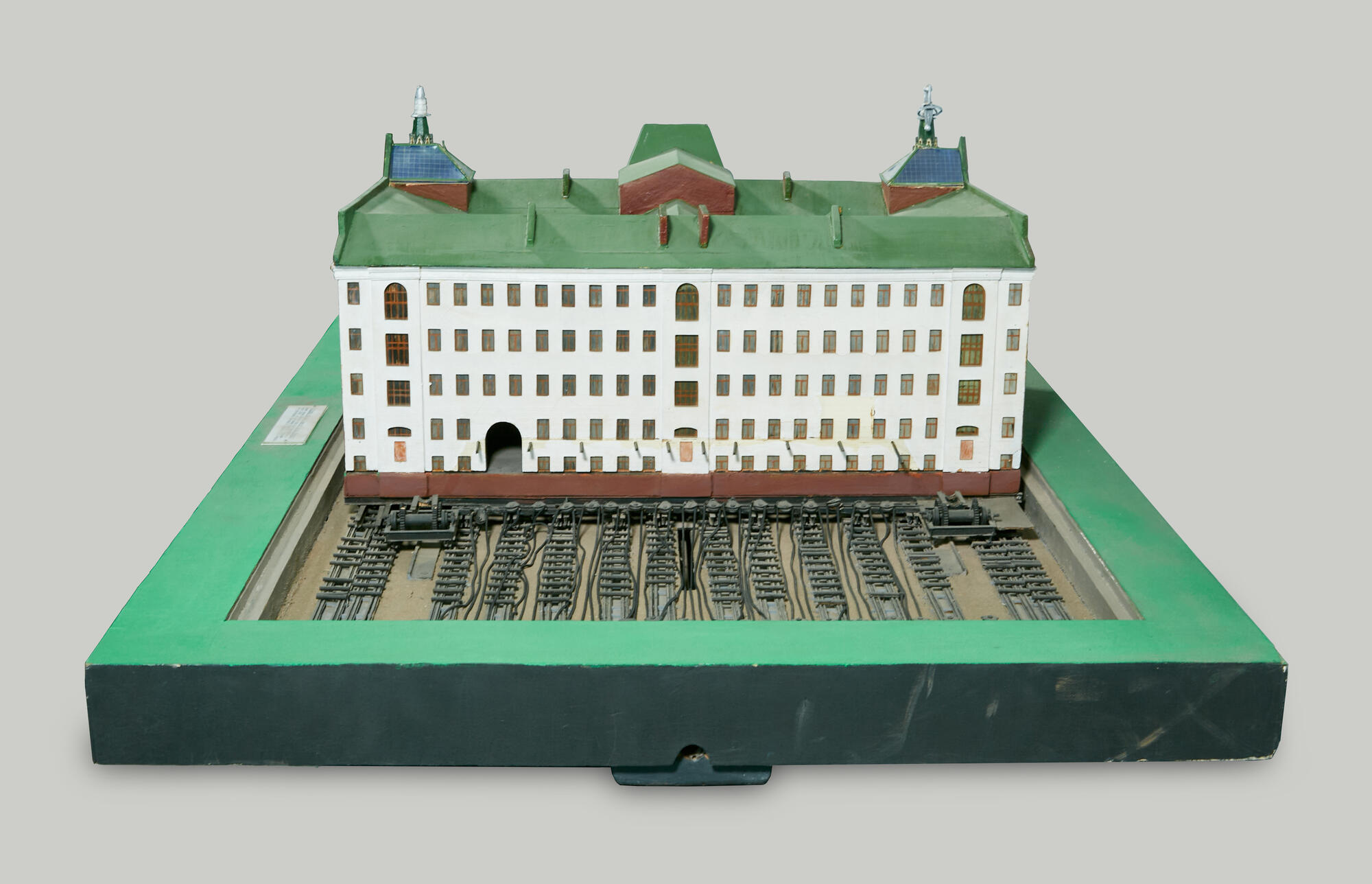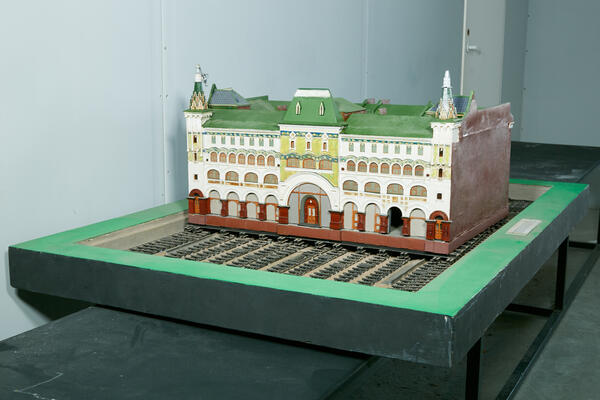The Museum of Moscow displays the scale model “Moving the House”. It clearly shows the process of an engineering operation that became a significant event in the reconstruction of Moscow in the 1930s — the relocation of house No. 24 on Gorky Street (now 6, Tverskaya Street) which is also called Savvinskoye Courtyard, to new foundations, deeper into the residential block.
The Savvinskoye Courtyard in Moscow belonged to the Zvenigorod Savvino-Storozhevsky Monastery, erected in 1907 by the architect Ivan Kuznetsov in neo-Russian style with elements of Art Nouveau and Baroque. The courtyard was built as a commercial apartment building. Until 1937 it faced Tverskaya Street directly, being the largest building between Okhotny Ryad and Tverskaya Square. Due to its location, the Savvinskoye Courtyard obstructed the expansion of Tverskaya Street planned as part of the Master Plan for the Reconstruction of Moscow.
To transform patriarchal Moscow into a modern metropolitan city, a large number of old and dilapidated houses were demolished, and the width of some streets was increased almost three times. Culturally significant buildings that were a hindrance to the expansion of streets were moved. This project was implemented by a special enterprise established in 1936, which recruited specialists from Metrostroy. Later it was renamed the Structure Relocation and Dismantlement Trust. Emmanuel Handel was appointed its chief engineer.
Engineers of the Trust developed an innovative technology, which consisted in using a system of blocks and cables driven by electric winches. During the reconstruction, the houses on the even side of Tverskaya Street were to be moved from the street deep into the residential block. It was decided to move the Savvinskoye Courtyard, which became a residential apartment building in the Soviet period. It weighed 24 thousand tons and was moved 50 meters with the sleeping residents inside at night on November 4, 1939. It is hard to imagine but the tenants were not asked to temporarily move out and the utilities were not cut off. The residents recalled that they did not even notice the movement: they did not feel any tremors and all the basic amenities were still available: the heating system, water supply, sewerage, telephone and electricity.





